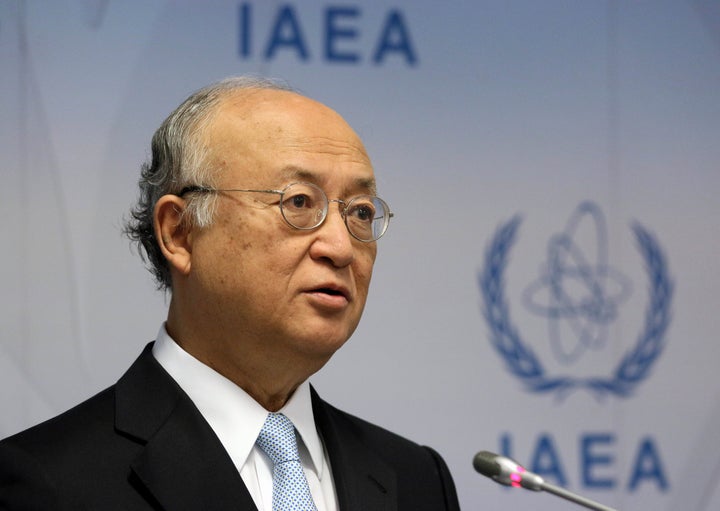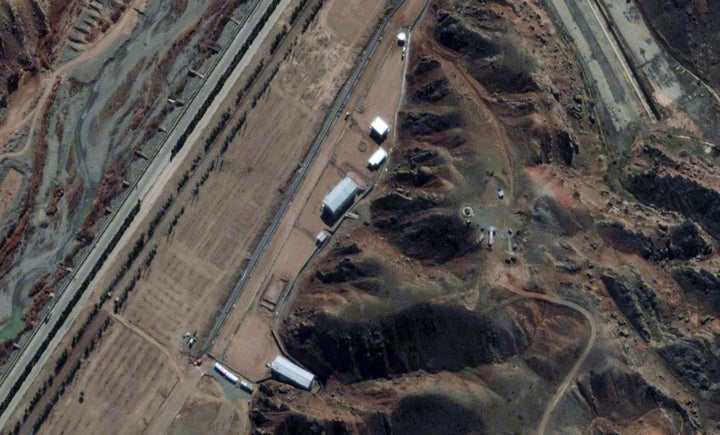WASHINGTON -- The Associated Press reported Wednesday that future oversight of Parchin, an Iranian military site suspected of hosting past nuclear weapons development over a decade ago, would be conducted by Iranian scientists rather than the International Atomic Energy Agency’s nuclear inspectors.
Critics of the Iranian nuclear deal declared vindication, citing the report as evidence that the broader nuclear agreement negotiated between Iran, the U.S. and five world powers was flawed. "How does this not set a precedent for future inspections at suspicious military sites in Iran?" asked House Speaker John Boehner (R-Ohio), suggesting that the Iranians would be entrusted to oversee their own nuclear inspections going forward.
But no sooner had the report surfaced than questions began to circulate about its underlying assertions and the accuracy of its claims. Hours after publication, nonproliferation expert Jeffrey Lewis noted on Twitter that the AP deleted several paragraphs that contained the most damning allegations about the way in which inspections would occur.
The revised version of the exposé also scrubbed a paragraph that suggested IAEA inspectors would oversee Iranian scientists as they collected samples and photographs at Parchin, despite other parts of the report claiming that officials from the U.N. nuclear watchdog agency would be barred from entering the facility.
Paul Colford, the news agency’s head of media relations, told The Huffington Post the AP “did not revise” the story. He said the AP often writes through news stories, in this case removing some details to make room for reactions from lawmakers in Washington. At 10:08 a.m. Thursday, AP released a full version of the story, including the parts from the original report that had been cut in subsequent versions.
Wendy Benjaminson, the Associated Press Washington assistant bureau chief, tweeted that the details were cut for space. As of Thursday morning, the outlet had not added a correction or explanation of changes to the latest version of the piece.
On Thursday, State Department spokesman John Kirby hedged towards an outright denial of the AP report, saying the IAEA would "in no way" give the Iranians the authority to conduct their own inspections of Parchin. "That is not how the IAEA does business," he said.
The IAEA has declined to confirm or deny the specifics of the AP's findings, but reiterated that the confidential arrangements are in line with the organization’s verification practices and requirements. “I am disturbed by statements suggesting that the IAEA has given responsibility for nuclear inspections to Iran," wrote IAEA Director General Yukiya Amano on Thursday in a statement. "Such statements misrepresent the way in which we will undertake this important verification work."
While officials with knowledge of the IAEA’s plan to inspect Parchin remained quiet, arms control experts expressed deep skepticism with the initial AP story. The organization, they argued, would simply not sign a deal in which it did not have a physical presence in the facility and allowed Iranian technicians to use their own materials to take environmental samples.
"It makes no sense,” said Tariq Rauf, a former IAEA safeguards official. “The IAEA would never accept an arrangement under which the technician of a country disappears in a room, comes back with a bag of samples, and says, 'Look, this is what I took,'" he said.
What is more likely, said Kelsey Davenport, director for nonproliferation policy at the Arms Control Association, is that the IAEA would allow the Iranians to conduct the sampling, with close oversight by agency officials. "IAEA inspectors could go to the site and say, 'We want a picture of that, we want a sample of that,'" she explained. "That way, they're still setting the bounds of the investigation, they're not letting Iran dictate the terms."
Rauf agreed that it would not be problematic for Iranians to collect samples in the physical presence of U.N. officials. "It's no big deal, as long as it is in visual view of IAEA inspectors, using IAEA swabs, IAEA bags, sealed in front of them, and the bags come into the custody of the IAEA inspectors."
The details of how the investigation into Parchin will unfold are contained in a highly classified document that only the IAEA and the Iranians have access to. While U.S. officials have publicly testified that they have been briefed on the substance of the arrangement, they say they are not privy to copies of the text.
Over the past several weeks, Iran hawks in Congress demanded copies of the Parchin roadmap, alleging that the administration allowed Iran to cut “side-deals” with the IAEA, undermining the broader nuclear agreement.
In a Senate Foreign Relations hearing last month, Sen. Bob Menendez (D-N.J), a leading opponent of the nuclear deal, directly asked Secretary of State John Kerry if Iran would be allowed to conduct environmental sampling at the military site. "Because if that is true, that would be the equivalent of the fox guarding the chicken coop,” he said at the time.
In an effort to assuage lawmakers’ concerns, IAEA Director General Amano traveled to Washington for a classified briefing with members of the committee. But even in a closed setting, Amano would not share the details of his organization’s agreement with Iran, citing the guarantee of confidentiality as a critical component of the agency’s ability to compel countries to open their facilities up to inspections.

Director General Yukiya Amano speaks during a news conference after a meeting of the IAEA board of governors at the International Center in Vienna, Austria. June 8, 2015.
Critics of the Iran deal tend to overstate the significance of the Parchin site, according to allies of the administration. It is not suspected to be part of the country's current or future nuclear activities. Rather, it was the site of past possible military dimensions (or PMD), and it is widely believed that work stopped there more than a decade ago.
So while getting a good look into the Parchin facility would tell the world community just how far Iran got towards building a bomb, it isn't particularly necessary for preventing the country from getting a bomb in the future. Other restrictions in the deal, including the monitoring of fissile material entering the country, would prevent that site from becoming a problematic location for nuclear activity going forward.

Satellite image of Parchin, taken in 2012.
Those explanations haven't been sufficient for opponents of the nuclear accord in the past. And it's likely that the AP story, even with its revisions, will give them additional ammunition. (Though it should be noted that many of these opponents bent the story to imply that all Iran nuclear sites would be self-monitored, and not just this particular site.) Still, momentum on Thursday appeared to be growing for ultimate passage of the deal.
Just after the AP story was published, Sen. Ed Markey (D-Mass.) announced he would vote in favor of the nuclear accord. Sen. Claire McCaskill (D-Mo.) followed suit Thursday morning, bringing the Obama administration eight votes away from the vote count needed to implement the agreement.
Michael Calderone contributed reporting.
This story has been updated to include statements from Yukiya Amano and John Kirby.

